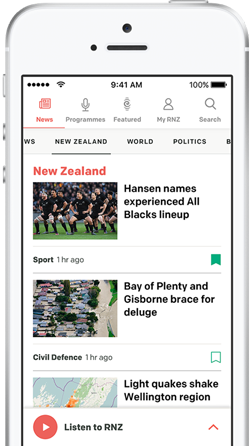
Middlemore Hospital. Photo: LDR / Stephen Forbes
There have been a record number of emergency patients through many of the country's hospitals this winter, with some treating twice the number of people they had beds for.
Middlemore and Wellington have been among the hardest hit.
Figures covering a two-week period at the height of winter showed Wellington Hospital's ED was at 223 percent capacity one day last month and most city EDs were regularly over capacity.
An ED nurse, Liandra, said she was not at all surprised by the stats.
"The workloads are massive at the moment," she said.
Patients turning up to an overcapacity ED would always be treated, but they might be waiting a long time, she said.
"We used to have just a couple of corridor beds here and there but now we've made corridor beds in corridors, outside corridors, and our waiting rooms are chocka," she said.
"So... the workload increases, the stress increases, the demand of patients increases."
The capacity figures covered two weeks at the peak of winter.
They showed Wellington Hospital, which had 44 resourced beds, was close to 200 percent capacity on several days, and mostly over 150 percent.
Waikato, with 64 beds, was at 150 percent more often that not, and Dunedin, with 31 beds, hit 187 percent one day in August.
There were very few instances of any the EDs being below 100 percent, except for Auckland Hospital which counted chairs and clinic rooms, rather than just beds, as its resourced treatment spaces.
Health NZ's lead for shorter stays in ED, Chris Lowry, said the winter had been "one of our busiest ever."

Chris Lowry. Photo: RNZ
"There have been record numbers of emergency department presentations across many of our hospitals due to severity of seasonal illnesses and staff sickness," she said.
Patients Stuck
The stats showed the impact of "bed block" - patients who no longer needed to be in ED but were waiting for space to get into a ward.
Counties Manukau had the most. On four days in the period there were more than 60 people waiting, representing more than half the available ED beds.
Wellington had about 15 waiting on several days, which was about a third of its beds.
Liandra, who was an NZNO delegate, said when new patients turned up to a bedblocked ED, they could end up being treated - or waiting - in the waiting room for hours.
That might be next to someone with, for example, a gastro bug.
"No one who is sick should be sitting in a chair in a waiting room with a waiting room full of more sick patients because that's just spreading more bugs around," she said.
Even though the statistics seemed daunting, people should still come to hospital, she said.
"They still get seen and they'll still get met with a smile even though the nurses are exhausted. They'll still get treated well, it's just it will take longer"
Lowry said the organisation was working on improving the situation, including working with GPs and urgent care clinics.
Wellington and Palmerston North Hospitals were both due to get new EDs, she said.
The stats
RNZ asked Health NZ for two weeks worth of figures for Auckland, North Shore, Waitakere, Counties Manukau, Waikato, Wellington, Christchurch and Dunedin.
It asked how many patients were waiting to be admitted to a ward every morning at 8am, and what the capacity was every night at 9pm, for eight city EDs from 28 July to 10 August.
The time-of-day requests were chosen to reflect likely pinch points but the figures could be higher or lower throughout the day.
Health NZ took more than a month to reply but health staff said the EDs were still just as busy.
Despite the capacity numbers, figures released by the government today, showed many emergency departments were making improvements to the percentage of patients waiting longer than six hours in an ED.
Most were still well below the 95 percent target it was working towards.
Wellington (Capital and Coast) was one of the worst performing, with just 53 percent of people treated or discharged within the timeframe, although that was an improvement on the last quarter (49 percent).
Sign up for Ngā Pitopito Kōrero, a daily newsletter curated by our editors and delivered straight to your inbox every weekday.






